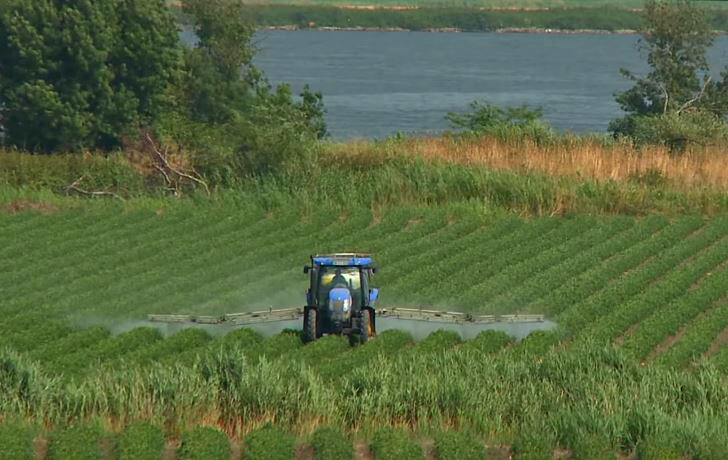Center for Biological Diversity Reports EPA Makes Pesticide Incident Reports Publicly Available for First Time
Center for Biological Diversity Reports EPA Makes Pesticide ... Sierra Sun Times


Data Details Serious Harms Caused by Pesticides

Spraying crop
Credit: EPA
Introduction
Last week, the Environmental Protection Agency (EPA) announced that it will make the most recent 10 years of pesticide incident reports available to the public in a searchable database to be updated every month.
Significance of Transparency
According to Nathan Donley, environmental health science director at the Center for Biological Diversity, this move by the EPA is the most significant step taken to increase transparency with the public about pesticides and their harms. Making this database publicly available will help people understand the specific harms caused by pesticides and hold regulators and pesticide companies accountable for addressing the real-world damage caused by these products.
Pesticide Incident Reports
Pesticide incident reports provide details about the harm caused to people, pets, wildlife, or plants. These reports are crucial for the EPA, the public, and researchers to learn about the real-world harms from pesticides to human health and the environment.
Previous Challenges
Previously, obtaining this information required submitting a Freedom of Information Act request, which was a burdensome process inaccessible to many. This delayed the release of basic information by months and wasted government and public resources.
Public Analyses
Recent public analyses of pesticide incident data have uncovered harms associated with certain pet flea collars that had gone unaddressed by the EPA for years. The identification of troubling incident data by the public led the EPA to implement safeguards for these flea collars, potentially preventing harm to tens of thousands of pets and people.
Newly Released Pesticide Incident Data System
- 7,136 incidents involving glyphosate, with 4,412 of these incidents causing harm to people. Glyphosate is the most commonly used pesticide in the United States.
- 192,248 incidents involving imidacloprid, with 4,423 incidents causing harm to people. Most incidents involved domestic animals. Imidacloprid is a neonicotinoid insecticide widely implicated in pollinator declines.
- 6,343 incidents involving atrazine, most of which involved surface or drinking water and plants. Atrazine is the nation’s second most commonly used herbicide.
- 1,169 incidents involving brodifacoum, with most incidents involving domestic animals, including 61 fatalities. Many human incidents were also reported. Brodifacoum is one of the most widely used rodenticides in rat poison products.
- Several examples of human health harms, including at least 18 deaths, associated with exposure to the extremely dangerous pesticide paraquat.
Pesticide Incident Reporting
A pesticide incident report is generated when a person believes they have been harmed by a pesticide or has witnessed harm to another person, animal, or plant. The report is then submitted to the appropriate authorities, which can include the EPA, pesticide companies, poison control centers, and state regulatory agencies.
Importance of Analysis
By analyzing the number and type of incidents associated with a pesticide over time, researchers can uncover harms that were previously unaccounted for when the EPA approved the pesticide’s use.
Reporting Pesticide Incidents
Pesticide incidents can be reported on the EPA’s pesticide incident website.
The Center for Biological Diversity is a national, nonprofit conservation organization with more than 1.7 million members and online activists dedicated to the protection of endangered species and wild places.
Source: Center for Biological Diversity
SDGs, Targets, and Indicators
1. Which SDGs are addressed or connected to the issues highlighted in the article?
- SDG 3: Good Health and Well-being
- SDG 6: Clean Water and Sanitation
- SDG 12: Responsible Consumption and Production
- SDG 15: Life on Land
2. What specific targets under those SDGs can be identified based on the article’s content?
- SDG 3.9: By 2030, substantially reduce the number of deaths and illnesses from hazardous chemicals and air, water, and soil pollution and contamination.
- SDG 6.3: By 2030, improve water quality by reducing pollution, eliminating dumping, and minimizing release of hazardous chemicals and materials.
- SDG 12.4: By 2020, achieve the environmentally sound management of chemicals and all wastes throughout their life cycle, in accordance with agreed international frameworks, and significantly reduce their release to air, water, and soil in order to minimize their adverse impacts on human health and the environment.
- SDG 15.9: By 2020, integrate ecosystem and biodiversity values into national and local planning, development processes, poverty reduction strategies, and accounts.
3. Are there any indicators mentioned or implied in the article that can be used to measure progress towards the identified targets?
- Number of incidents involving harm to people, pets, wildlife, or plants caused by specific pesticides (e.g., glyphosate, imidacloprid, atrazine, brodifacoum, paraquat).
- Number of deaths associated with exposure to specific pesticides (e.g., paraquat).
- Number of incidents involving harm to domestic animals caused by specific pesticides (e.g., imidacloprid, brodifacoum).
- Number of incidents involving harm to surface or drinking water and plants caused by specific pesticides (e.g., atrazine).
Table: SDGs, Targets, and Indicators
| SDGs | Targets | Indicators |
|---|---|---|
| SDG 3: Good Health and Well-being | Target 3.9: By 2030, substantially reduce the number of deaths and illnesses from hazardous chemicals and air, water, and soil pollution and contamination. | – Number of incidents involving harm to people caused by specific pesticides (e.g., glyphosate, imidacloprid) – Number of deaths associated with exposure to specific pesticides (e.g., paraquat) |
| SDG 6: Clean Water and Sanitation | Target 6.3: By 2030, improve water quality by reducing pollution, eliminating dumping, and minimizing release of hazardous chemicals and materials. | – Number of incidents involving harm to surface or drinking water caused by specific pesticides (e.g., atrazine) |
| SDG 12: Responsible Consumption and Production | Target 12.4: By 2020, achieve the environmentally sound management of chemicals and all wastes throughout their life cycle, in accordance with agreed international frameworks, and significantly reduce their release to air, water, and soil in order to minimize their adverse impacts on human health and the environment. | – Number of incidents involving harm to people, pets, wildlife, or plants caused by specific pesticides (e.g., glyphosate, imidacloprid, atrazine, brodifacoum, paraquat) |
| SDG 15: Life on Land | Target 15.9: By 2020, integrate ecosystem and biodiversity values into national and local planning, development processes, poverty reduction strategies, and accounts. | – Number of incidents involving harm to wildlife or plants caused by specific pesticides (e.g., glyphosate, atrazine) |
Behold! This splendid article springs forth from the wellspring of knowledge, shaped by a wondrous proprietary AI technology that delved into a vast ocean of data, illuminating the path towards the Sustainable Development Goals. Remember that all rights are reserved by SDG Investors LLC, empowering us to champion progress together.
Source: goldrushcam.com

Join us, as fellow seekers of change, on a transformative journey at https://sdgtalks.ai/welcome, where you can become a member and actively contribute to shaping a brighter future.







